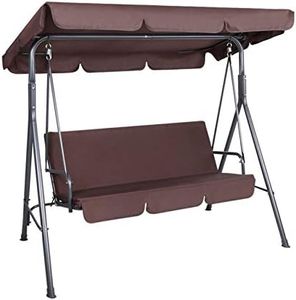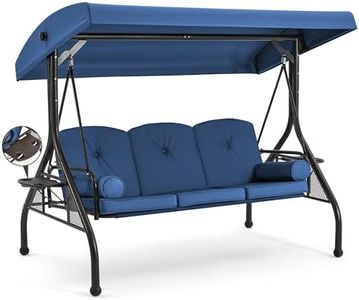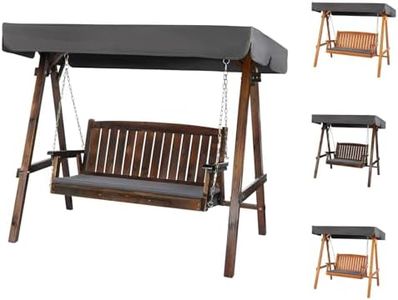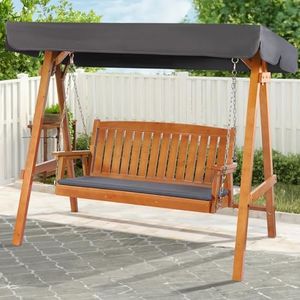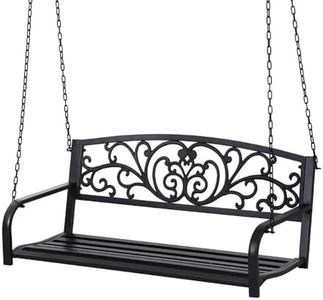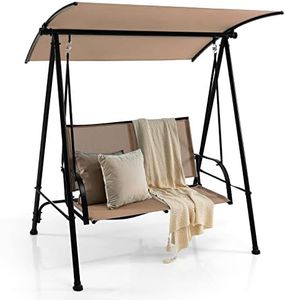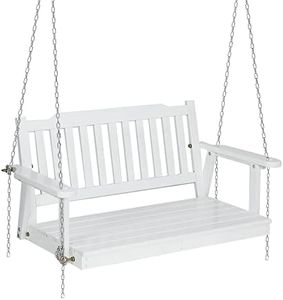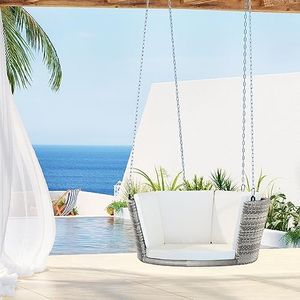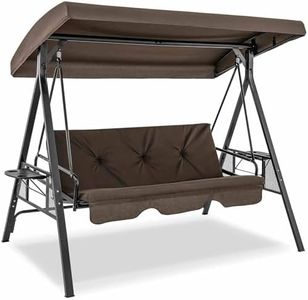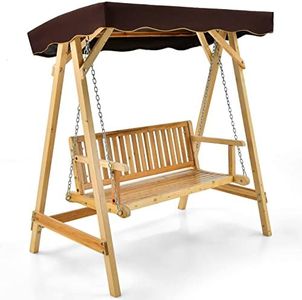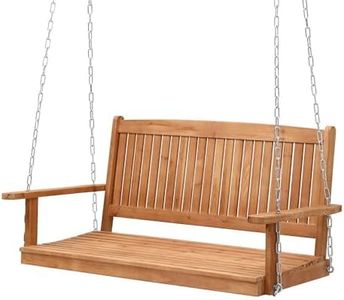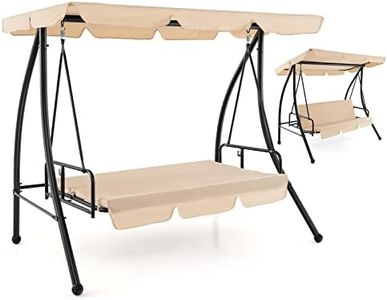We Use CookiesWe use cookies to enhance the security, performance,
functionality and for analytical and promotional activities. By continuing to browse this site you
are agreeing to our privacy policy
10 Best Porch Swings
From leading brands and best sellers available on the web.Buying Guide for the Best Porch Swings
Porch swings are a lovely addition to any outdoor space, creating a relaxing spot to enjoy the outdoors, chat with friends, or just unwind. Picking the right porch swing is about more than just style—it's about choosing something that fits your space, matches your needs, and stands up to the weather. When shopping for a porch swing, consider its size, material, weight capacity, comfort features, mounting options, and required maintenance. Thinking through each of these specs can help you find the perfect match for your porch and lifestyle.Size and Seating CapacityThe size of a porch swing affects how many people can sit on it comfortably and how much space it will take up on your porch. Swings generally come in sizes for one, two, or three people. Small swings are perfect for solo relaxation and tight spaces. Medium ones can comfortably seat two adults, making them great for couples. Larger swings can fit three or more people and are best if you have a spacious porch and see yourself hosting or spending time with family. Measure your available space before choosing a swing and consider how many will use it regularly so you don’t end up with something too big or too small.
MaterialPorch swings are made from various materials like wood, metal, wicker, or plastic. Wood swings are classic and can be very attractive, but they may need more maintenance to stay weather-resistant. Metal swings are sturdy and durable but might get hot in the sun and require protection from rust. Wicker swings give a cozy, traditional look but may not be as weatherproof unless made from synthetic wicker. Plastic swings are the easiest to maintain and often weather-resistant, but may be less stylish. Choose a material based on the weather in your area, the look you want, and how much upkeep you’re willing to do.
Weight CapacityWeight capacity tells you the maximum load the swing can support safely. Swings usually range from holding about 250 pounds for smaller seats up to over 600 pounds for heavy-duty, larger models. If several adults will sit on the swing at once, opt for a higher weight capacity. Always factor in the combined weight of likely users and give yourself a comfortable margin to ensure safety and longevity.
Comfort FeaturesComfort features include the shape of the seat, armrests, back support, and presence of cushions. Some swings are flat, while others are contoured for better support. Others offer deep seats or even include built-in cup holders. If you plan to use your swing a lot, especially for longer periods, look for supportive backs and armrests, and consider whether you’d like included cushions or plan to add your own. Try to imagine how you’ll use the swing—quick visits or long, leisurely sessions—to determine which comfort features matter most.
Mounting TypePorch swings can be either chain-hung from a ceiling or come with a stand. Chain-hung swings give a classic porch look but require a strong, overhead beam for safe hanging. Stands make swings portable and easily moved but take up more floor space. Consider the structure of your porch: if you have sturdy overhead support, a hanging swing might work; if not, look into swings with stands.
Weather Resistance and MaintenanceWeather resistance tells you how well the swing will handle rain, sun, and changing seasons. Some materials and finishes are better at resisting moisture and sun damage, while others may need annual treatments or special coverings. If you live in a wet or sunny area, choose swings made from treated wood, powder-coated metal, or all-weather wicker, and check what upkeep is recommended. If you prefer minimum maintenance, lean towards materials designed to withstand the elements without much attention.
